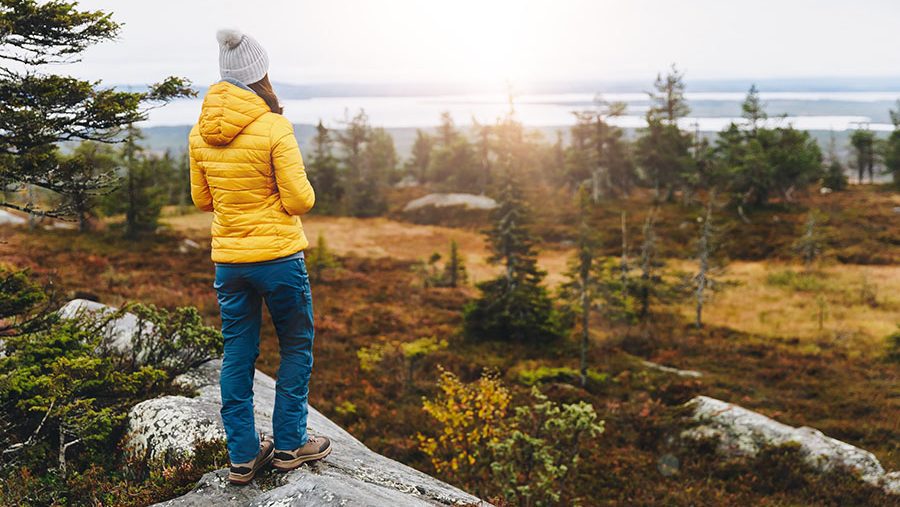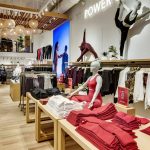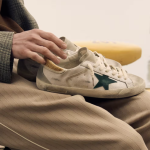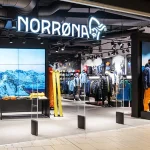Leaders and innovators in the outdoor active lifestyle market see 2025 as a potential recovery year as a lengthy destocking process has finally rebalanced inventories across most categories.
The potential for tariffs and inflationary pressures are among the concerns but many are encouraged that interest in many outdoor activities remain elevated coming out of the pandemic and interest in sustainable messages anchoring many of the industry’s brands continues.
 Chico Bukovansky
Chico Bukovansky
Global Sales Director, DPS Skis
“Looking into 2025 and the snowsports space that DPS and Phantom Glide work in, the main factor for our industry is often out of our control. That is snowfall, the timing of it and where it lands regionally. The good news is that this winter has been off to a strong start snow-wise across most regions. With strong holiday storms and good conditions, consumer confidence rolls strong through the season. They book ski trips, by snow gear and get more days of enjoyment when the conditions are strong.
“The overall economic outlook and consumer confidence feel strong going into 2025. While there are still inventory hangovers, strong snow conditions will help clean the pipeline.
“With the incoming administration topics on tariffs, being a fully U.S.-based manufacturing brand puts us in a strong position to manage our business and consumer expectations. It would be great to see brands with strong investments in domestic manufacturing finally receive some proper recognition in the wintersports space. The story gets told, but often the consumer doesn’t hear it. With so much overall domestic manufacturing topics in the news, the consumer will be taking deeper looks at where their gear is built and all the layers connected to the manufacturing.
“On the slopes, we have seen a strong trend toward pure carving performance in both the ski and snowboard space. Our focus on making high-performance, full carbon carving skis lines up directly with the large consumer base realizing that high performance carving skis and groomer days can be as much fun as a proper powder day.”
 Rick Case
Rick Case
CEO & Founder, Nite Ize
“As we look ahead to 2025, we see consumers continuing to shift towards planet-friendly products. Rechargeable products not only reduce waste but increase convenience, allowing users to plug in to recharge rather than head to the store to buy new batteries….The outdoor industry has had a number of firsts in renewable development and continues to set an example for industries around the globe. By prioritizing sustainable practices, brands can inspire consumers to play a role in protecting the planet.”
 Eoin Comerford
Eoin Comerford
Principal Outsize Consulting, Former CEO, Moosejaw
“As 2024 winds down, it feels like the major inventory glut of the last few years is fading and open-to-buy is returning, though the higher ticket equipment categories like bike and kayak continue to face the longest hangovers. Even as these acute challenges fade, the industry’s chronic challenges continue: a lack of true innovation and differentiation, sustainability ‘box checking’ versus true impact, and an aging customer base driven by a lack of affordability and inclusivity. In 2025, we need to find ways to come together to drive positive change for the long-term health of our industry, our society and our planet.”
Jean Dubé
Business Development, North America, Heat It
“There can be no argument against the health and wellness benefits humans get from being outside, regardless of the activity. From multi-day backcountry suffer-fests to backyard BBQs or front-country family fun to time spent at the local park, each brings a myriad of benefits to people and our planet. The boost our industry enjoyed from pandemic-era enthusiasts, many of whom were first-timers, gave us a once-in-a-generation opportunity to inspire people to get outdoors, learn about, appreciate, and protect nature, and get well. And yes, we sold them a lot of gear.
“We need to leverage both the undeniable benefits of getting outside and the boon of millions of new outdoor enthusiasts to reignite interest for outdoor pursuits, regardless of degree of difficulty. This is particularly true of children, who will someday be the leaders making critical policy decisions to protect the planet, its natural environment and the health and wellness of all its inhabitants. Lead them outside, early and often.
“Ours is the industry that is ideally-positioned to create opportunities and remove barriers for people to get outdoors. Let’s get on with it.”
 Lena Haushofer
Lena Haushofer
Exhibition Director, ISPO Munich & OutDoor/Messe München GmbH
“The sporting goods industry in 2025 is expected to navigate a dynamic landscape shaped by several key factors. The industry will continue to face economic challenges such as inflation and potential tariffs. These factors could impact production costs and pricing strategies, requiring companies to be agile in their financial planning and operations. There is a growing trend towards sports that are easy to pick up and more social than traditional organized sports. This shift is likely to influence product development and marketing strategies, with a focus on versatility and accessibility. Sustainability will remain a critical focus. Companies are expected to innovate in eco-friendly materials and sustainable practices to meet consumer demand and regulatory requirements, including reducing carbon footprints and enhancing product lifecycles.
“Technology integration, such as wearable tech and smart equipment, will continue to grow. These innovations not only enhance performance but also provide valuable data for both consumers and manufacturers. The emphasis on health and wellness will drive demand for athletic wear and equipment. As more people adopt active lifestyles, the market for fitness-related products is expected to expand. The convenience of online shopping will further boost sales in the sporting goods sector, and companies will need to enhance their digital presence and logistics to meet consumer expectations.”
Matt Kaplan
GM, Mammut North America
 “Though 2025 brings uncertainty—due to tariffs, inflation and supply chain challenges—we also see significant opportunities driving growth in the outdoor industry. Participation in outdoor and snow sports continues to rise with increasing interest in high-quality, sustainably made gear.
“Though 2025 brings uncertainty—due to tariffs, inflation and supply chain challenges—we also see significant opportunities driving growth in the outdoor industry. Participation in outdoor and snow sports continues to rise with increasing interest in high-quality, sustainably made gear.
“In 2024, we announced a groundbreaking collaboration focused on carbon dioxide (CO2) removal and storage, a significant step forward in our fight against climate change—and we’re just getting started. Looking ahead to 2025, we’re excited about the innovations we’re bringing to market, along with new resort and athlete partnerships, all of which support our mission to connect with consumers and foster a deeper appreciation for experiencing and protecting the natural world.”
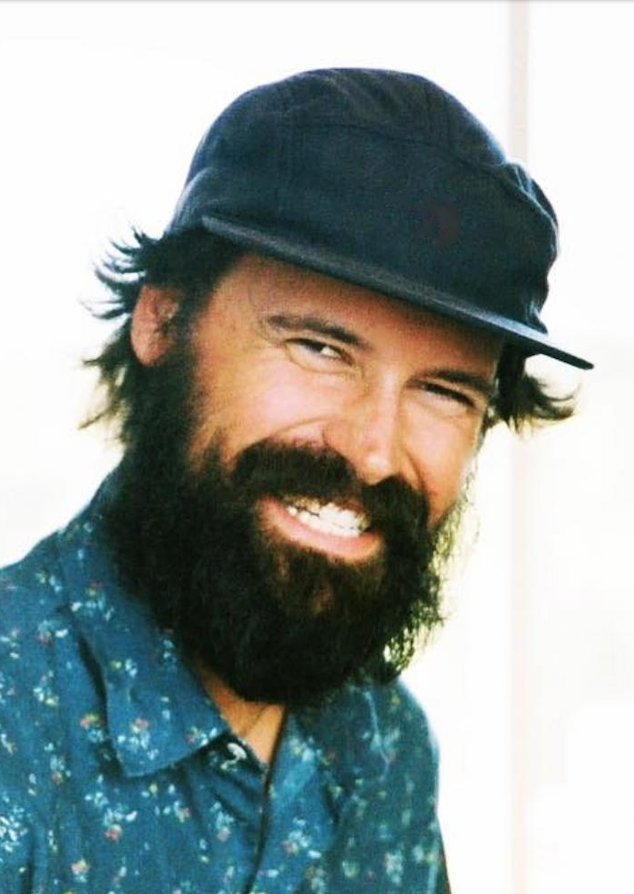 Cooper Lambla
Cooper Lambla
Head of Brand & Marketing, Astral
“In 2025, the industry will experience a ‘return to growth’ fueled by normalizing inventory levels as well as innovation in product performance, brand expression and customer service. Simultaneously, consumers will continue navigating through promotion-heavy shopping environments overstocked with toxic materials (PFAS, petroleum-based plastics, etc.) while shouldering the cost of any new tariffs they voted for in November. Brands and retailers who stay true to their mission and consistently serve the needs of specific consumer segments in unique and necessary ways will continue to succeed.”
 Gabe Maier
Gabe Maier
President, Grassroots Outdoor Alliance
“We frequently talk with our specialty retail network of 100 independent specialty outdoor retailers representing 200-plus store locations, and overall, the mood for 2025 among our group is cautious optimism. The general economy certainly will continue to play a big role in how future consumer demand unfolds and there could be other new headwinds like potential tariffs, but for the first time in a couple of years inventory levels in our industry are moving in the right direction at both the retailer and manufacturer level, and sales are showing signs of stabilization.”
Doug Metchick
President, Dermatone
 “Our outlook for 2025 is generally optimistic. The skincare and sunscreen industry saw solid growth in 2024, and we expect that momentum to continue in 2025. Outdoor participation also continues to show growth, especially among women and seniors, and it seems as though inventory and de-stocking issues for many outdoor brands are normalizing; however, we also see some challenges ahead for the outdoor segment. For example, even though participation has been growing, the number of outings per year is starting to taper, especially among kids. We’re also witnessing many outdoor brands trying to go mainstream and mass brands clamoring for outdoor positions. This convergence is more about chasing fashion and style than technical performance, so we’re concerned that the meaning of ‘outdoor’ could start to become more about appearance than actual experiences or adventures. On top of that, the grab for immediate attention and likes may be coming at the expense of value creation and brand equity.”
“Our outlook for 2025 is generally optimistic. The skincare and sunscreen industry saw solid growth in 2024, and we expect that momentum to continue in 2025. Outdoor participation also continues to show growth, especially among women and seniors, and it seems as though inventory and de-stocking issues for many outdoor brands are normalizing; however, we also see some challenges ahead for the outdoor segment. For example, even though participation has been growing, the number of outings per year is starting to taper, especially among kids. We’re also witnessing many outdoor brands trying to go mainstream and mass brands clamoring for outdoor positions. This convergence is more about chasing fashion and style than technical performance, so we’re concerned that the meaning of ‘outdoor’ could start to become more about appearance than actual experiences or adventures. On top of that, the grab for immediate attention and likes may be coming at the expense of value creation and brand equity.”
Craig Mickey
Chief Commercial Officer, Mountain House
“We’re seeing a younger, more diverse set of people going outdoors for wellness and community who are looking for guidance on planning from trip suggestions and logistics to gear to what to bring to eat. It’s an exciting opportunity for the industry to help these new generations become more confident and accomplished outdoor adventurers.”
 Leslie Mullins
Leslie Mullins
Chief Marketing Officer and E-Commerce Director, Next Adventure
“As we step into 2025, economic uncertainty serves as a reminder to lean into what truly matters: our values, our partnerships and our mission to make the outdoors accessible to all. At Next Adventure, we’re refocusing on collaboration, working closely with both large and small outdoor product manufacturers to curate the right assortments that meet the evolving needs of our customers. We believe this approach not only supports our customers but strengthens the fabric of the outdoor industry, fostering resilience and innovation as we navigate the year ahead—together.”
Kelly Nester
CEO, Farm to Feet

“The year ahead presents its share of challenges, but also significant opportunities. While inflation and shifting consumer behaviors pose obstacles, they also drive us to stay agile and responsive. At Farm to Feet, our focus on 100 percent U.S.-made products and sustainability provides a solid foundation as we adapt to these changes.
“The outdoor industry continues to evolve, with more people seeking high-quality, purpose-driven products. It’s clear that consumers care deeply about durability and environmental impact—and that’s where we excel. While the road ahead may be tough, we’re optimistic about what’s to come. Challenges inspire us to innovate, engage more meaningfully with our customers, and stay true to our commitment to American-made excellence.”
 Kenneth Perkins
Kenneth Perkins
CEO and Founder, Ozmo Helmets/impctLAB
“We are excited about the growing momentum around micromobility. Cities worldwide are embracing cycling infrastructure, and urban families are increasingly turning to e-bikes for safe, sustainable transportation….At the same time, the industry continues to navigate challenges like lingering inventory imbalances from the pandemic and trade uncertainties…Tariffs pose an immediate threat to many, especially given the limited options for helmet manufacturing outside of China.
“Safety will remain a dominant theme, particularly as regulations for e-bikes and their accessories mature. 2025 is a year for bold steps in building trust, innovating thoughtfully and shaping a future of micromobility, meeting consumers where their lives and values interse.”
 Karl Salz
Karl Salz
President, Sun & Ski Sports
“As we head into 2025, the outdoor sporting goods retail landscape faces challenges and opportunities. The direct-to-consumer (DTC) shift by major brands continues to reshape the industry, compelling traditional retailers like Sun & Ski Sports to adapt their strategies. Additionally, consumers are increasingly fragmented in their apparel and accessories preferences, making it harder to predict trends and meet diverse demands.
“A key challenge remains the growing dominance of online shopping, which forces retailers to elevate their digital presence and e-commerce capabilities, adding expense in the process. In the bike business, volatility remains a concern, with fluctuating demand driven by supply chain dynamics and changing consumer priorities. However, we are optimistic about the year ahead.
“As always, we’re hopeful Mother Nature will accommodate with great weather, which, for us, means cold and snow! Economic recovery and improving consumer sentiment signal a potential surge in discretionary spending, particularly for outdoor activities. This presents an exciting opportunity for retailers to attract and retain customers with personalized experiences, both online and in-store. At Sun & Ski Sports, we’re committed to navigating these shifts by staying nimble, offering tailored product selections and embracing a hybrid shopping experience to meet evolving consumer needs. The outlook for 2025 is promising, and we’re ready to make the most of it.“
 John Sears
John Sears
Global General Manager, Gregory Mountain Products
“Despite the obvious uncertainties in market demand, weather, pockets of discounted inventory, and potential in-season tariff-driven price increases, I am optimistic 2025 will move in a positive direction for the outdoor industry. The shift in focus from top to bottom line will continue and should deliver more favorable outcomes versus 2024, given leaner inventory positions for leading retailers and brands relative to last year at this time. However, I’m still optimistic about top-line YOY growth picking up in the latter half of Q2, with momentum carrying into the summer and fall. Brands that have planned and forecasted with insight and confidence, as challenging as that is to execute after the last two years, maybe in a position to capture ASAP sales upside on conservative spring forecasts by chasing success where it materializes.
“In terms of outdoor participation and the product categories Gregory Mountain Products serves, I expect our strong brand momentum and market share growth to continue. For the broader landscape, I’m cautiously optimistic that 2025 will over-deliver on fairly soft industry forecasts. The ‘revenge travel’ trend has cooled and stabilized, wallets will stay tight, and health and wellness will continue to be front of mind for our consumers, leaving the door open for lower-cost outdoor recreation to cycle back and begin to gain some momentum. In terms of product trends, I see versatility, high value-to-price positioning and clever innovation that help make it easier to get outside outperforming higher price points and highly specialized products.”
Sean Smith
Show Director, Outdoor Retailer
 “It’s safe to say that probably the most prevalent concern or question on the industry’s mind heading into 2025 centers around what will happen with tariffs. As of right now, we’re all in a wait-and-see pattern. So, not knowing what the outcome will be, I believe the outdoor industry is in a better place coming into 2025 than we were coming into 2024.
“It’s safe to say that probably the most prevalent concern or question on the industry’s mind heading into 2025 centers around what will happen with tariffs. As of right now, we’re all in a wait-and-see pattern. So, not knowing what the outcome will be, I believe the outdoor industry is in a better place coming into 2025 than we were coming into 2024.
“The issue of retailers being over-inventoried has improved greatly, outdoor recreation participation is up, and depending on who you talk to, there is optimism on the economy for 2025. What I believe the outdoor industry can and should be focusing on heading into the new year is unity. Whether we’re talking about tariffs or innovation or sustainability or diversity and inclusion, we will be much stronger and better poised for success if we can spend more time talking about the issues of the day and fostering a common perspective. And it’s especially important if tariffs are imposed. It’s just one example, but the industry will have greater impact if we can unite to have a louder, more powerful voice by working for the collective good.”
Sam Spears
President, Ara North America
 “The strong independent retailers who “do things differently, smartly” will get stronger and expand their influence. There will be confusion and frustration in how the industry (wholesale and retail) manages the possible/probable introduction of tariffs—from country of origin sourcing strategies to transportation challenges to pricing. This topic has the potential to be a big business interrupter—in all aspects of our U.S. lives, which will have a double-negative impact on our industry as the cost of all items could increase in price thereby reducing the consumer’s ability/willingness to spend on footwear and accessories.
“The strong independent retailers who “do things differently, smartly” will get stronger and expand their influence. There will be confusion and frustration in how the industry (wholesale and retail) manages the possible/probable introduction of tariffs—from country of origin sourcing strategies to transportation challenges to pricing. This topic has the potential to be a big business interrupter—in all aspects of our U.S. lives, which will have a double-negative impact on our industry as the cost of all items could increase in price thereby reducing the consumer’s ability/willingness to spend on footwear and accessories.
“A return to office will increase which will be a benefit to the footwear retailer’s sales as the need for dressier footwear will surge (not to the pre-pandemic levels, but this category will grow in 2025), especially the comfort dress category since the majority of consumers have been wearing sneakers for half a decade and have become accustomed to sneaker level of comfort and expect comfort to be a ‘given’ in all footwear categories.”
Joel Stevens
Co-Founder, Epic Water Filters
“Increasing concerns about contaminants like PFAs and microplastics are a significant tailwind for the water filtration industry as more consumers seek portable, on-the-go filtration solutions to ensure cleaner water, whether at home or outdoors. The new administration’s focus on health issues, including growing concern over the potential neurotoxic effects of synthetic fluoride in drinking water, could further raise awareness. The trend toward sustainability is also boosting the demand for water bottles with built-in filters, as people seek alternatives to single-use plastic bottles and more eco-friendly options.”
Steven Stewart
Chief Brand and Innovation Officer, Lycra
 “We are cautiously optimistic about 2025 but anticipate the lingering effects of inflation on production costs and consumer spending. Due to market dynamics, we expect to see an increase in nearshoring as some value chains shift West, and our Spandex and Nylon production in the Americas and global footprint will enable us to service this trend. Pending regulations surrounding sustainability and growing consumer expectations for sustainable options will also influence industry priorities and strategies.
“We are cautiously optimistic about 2025 but anticipate the lingering effects of inflation on production costs and consumer spending. Due to market dynamics, we expect to see an increase in nearshoring as some value chains shift West, and our Spandex and Nylon production in the Americas and global footprint will enable us to service this trend. Pending regulations surrounding sustainability and growing consumer expectations for sustainable options will also influence industry priorities and strategies.
“Our commitment to reducing the environmental impact of our products and production processes inspired the development of bio-derived Lycra EcoMade fiber, which will be commercially available in 2H 2025.”
 Matthew Tucker
Matthew Tucker
Sports Equipment Advisor, Circana
“As we enter the new year, the outdoor industry faces a growing list of challenges, particularly the threat of tariffs, which affects consumer confidence and spending patterns. This uncertainty may lead to a temporary increase in sales of certain product categories as consumers rush to purchase items before potential price hikes, but this is an unsustainable growth strategy.
“We should expect a focus on operational efficiencies to challenge the innovation needed to encourage repurchases. It is crucial for brands and retailers to closely monitor sales trends and adapt to the evolving priorities of customers. To address anticipated soft demand, brands and retailers should focus on providing value and newness.
“Ultimately, the success of the year will depend on consumers’ ongoing interest and investment in outdoor recreation for their overall well-being and social interactions. Companies that remain flexible and innovative will stand the best chance of thriving in these changing conditions.”
Mike Welch
SVP, Global Sales & Marketing, Nemo
“At Nemo, we are optimistic about 2025 and see it as a year of enhanced profitability for our partners. In 2024, we focused on improving our bottom line, successfully rebalancing our business with many of our dealers to increase full-price sales opportunities. While we sold fewer units overall, we achieved double-digit margin dollar growth across a wide range of partners. As we look forward to 2025, we see the opportunity to build on this momentum, driving increased full-price value for customers through continued innovation and a strong commitment to sustainability.”
***
See below for additional SGB Media coverage on the 2025 Look Ahead from the active lifestyle market and industry trade associations.
EXEC: SGB 2025 Look Ahead with Active Lifestyle Market Leaders

